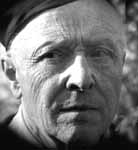
Alfred Kubin’s gloomy and frightening works fascinate and repel at the same time. Strange images, born in the imagination of the artist, create on paper an amazing, but disturbing world. This world he illustrates and describes in his book The Other Side.
“Austrian Goya” was born April 10, 1877 in a wealthy family, but the artist’s childhood was overshadowed by the death of his brother and the early death of his mother. At her funeral, ten-year-old Alfred Kubin made the first attempt at suicide.
In 1898, Kubin went to Munich, where he began a thorough preparation for admission to the Academy of Arts. However, he did not stay long at the Academy. Alfred Kubin began cooperation with the magazine Simplicissimus and got acquainted with many outstanding artists, the work of Edvard Munch and Odilon Redon had a great influence on his work. In the early watercolors of Kubin, frightening and cold, the symbolism of Redon can be clearly seen. However, symbolism is replaced by expression, drawings are grotesque and fantastic.
In 1906, Kubin marries, and the young couple leave Munich, settling in the castle of Zwickledt in Upper Austria. But despite the solitary way of life, the artist takes part in the creation of the “New Munich Union of Artists” in 1909, and two years later he joins the “Blue Rider”, the union of Expressionist artists.
In 1909, Alfred Kubin’s novel “The Other Side” was published, an integral part of which drawings were made by the author himself. In the illustration, the master achieved extraordinary successes, but in them there are also the motives of doom, the gloom of the universe and the aimlessness of human life. Alfred Kubin created illustrations for the works of Flaubert, Po, Dostoevsky, Hoffmann.
Despite several attempts at suicide, a gloomy misanthropic view of the world, Kubin lived a great life: the artist died on the 83rd year of life on August 20, 1959.
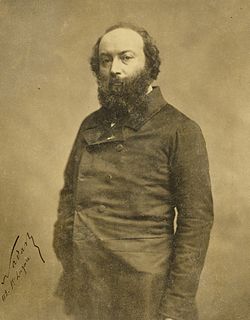
At the beginning of the XIX century, the landscape in academic painting was just a decoration for a mythological or historical event, depicted on the canvas. The romanticism that came to replace classicism began to consider this genre as an independent one, however, greatly embellishing and modifying it. The desire to see the native landscape realistic, beautiful in its natural beauty united a group of artists named after the village of Barbizon near Paris, the neighborhood of which they often wrote.
The future head of the Barbizon school, Theodore Rousseau, was born on April 15, 1812 in Paris. Love and admiration for nature sparked in him interest in painting and the desire to become an artist. From the memories of friends we learn that Rousseau has always been a tireless traveler, loved long walks. One of the early known works of the painter is stored in the Hermitage, it is called “Market in Normandy.” It shows a small town, a crowd of buyers and traders. Later, Rousseau refuses such a “populated” landscape, in his subsequent works the presence of people is sporadic. Especially the artist liked to write oaks, next to the heroic power of which people and animals look small, insignificant. Compared with the age of ageless giants, human life seems fleeting, and the vain problems of worldly life are insignificant.
Winter of 1836-1837, Rousseau spent in the village of Barbizon, the nature of these places made a great impression on him, and the artist began to come every year until he moved there definitively in 1848.
The work of Theodore Rousseau changed the view of the landscape as a genre and significantly increased its significance and understanding of what is interesting and valuable for painting. “The tree that rustles and the heather that grows,” wrote Rousseau, “is for me a great story that does not change; if I speak their language, I will speak the language of all time. “
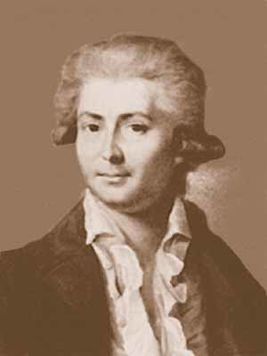
Semen Shchedrin is an artist, to whom we owe the picturesque landscapes of the palace parks. A graduate of the St. Petersburg Academy of Arts Semen Shchedrin is a master of the poetic landscape.
After graduation, the artist went to Paris, and then to Rome. In Paris, Shchedrin worked a lot on the planner, in Rome he took the ideas of classicism, which were reflected in his creative method. In 1776, the artist returned to his homeland and became a professor of landscape painting. In addition, he is instructed to create images of palaces and parks of Catherine II.
Semen Shchedrin depicted the views of Gatchina, Peterhof, Pavlovsk. The artist reveals himself in his works as a poet who admires nature. According to Shchedrin’s creations you can make a kind of walk. The construction of the composition in Shchedrin’s paintings is similar to the composition of the park itself. The view moves from one object to another, the viewer seems to go deeper into the park, thereby creating a sense of a walk.
Shchedrin’s works harmoniously combine the decorativeness and the desire to convey a concrete look.
It is believed that in many respects it was thanks to Semyon Shchedrin that the landscape painters paid attention to the Russian nature.
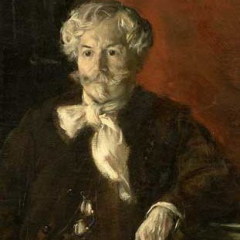
Jean-Francois Raffaelli was born on April 20, 1850 in Paris.
Rafaelli attended the School of Fine Arts, the workshop of Jean-Leon Gerome. The artist gained fame as a master of genre paintings, cityscapes. The heroes of Raffaelli’s paintings are people from the poor suburbs of Paris. In his creations, Rafaelli shows neither splendor nor luxury. This trend can be traced both in the choice of the heroes of the paintings, and in the choice of landscapes. And if the artist depicts the central streets of Paris or a wealthy man, he still strives for simplicity.
Rafaelli experienced a strong influence of impressionists, even participated in several of their exhibitions. However, “colleagues in the shop” criticized him for superficiality.
The artist was friendly with Edgar Degas and learned from him a runaway manner of writing. Seeing that impressionism is not suitable for expressing his ideas, Jean-François Raffaelli developed his own creative method. The artist greatly diluted the oil paints, which made it possible to get a kind of “watercolor effect”.
In addition to genre works and landscapes, Jean-Francois Raffaelli created portraits of his contemporaries. Another direction of the artist’s creative activity was color engraving. It is with the name of Jean-François Raffaelli attributed to the revival of this technique.
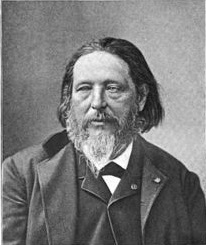
Idyllic scenes of rural life, executed in a realistic manner – the main line of creativity of the famous French painter Jules Breton. His works are imbued with love for his native land, respect for his traditions.
Jules Breton was born on May 1, 1827 in the family of a manager of a large estate. The boy lost his mother early, she died when he was only 4 years old. Jules and his younger brother were raised by their father and grandmother on the maternal side. In 1842, the talent of the youngster saw the artist Felix de Vin, who persuaded the family of Jules Breton to let him go to Ghent to study art.
Under the influence of Felix de Vin, Breton paints pictures primarily on historical subjects, and these paintings are a success. However, in 1852, after returning to his homeland, the young painter understands that he is most worried and inspired by simple rural life, the everyday life of peasants and the nature of the French province. In 1853 he exhibited “Return from the harvest”, this work shocked the contemporaries of the artist with its simplicity and at the same time refinement and brought success to the author. Jules Breton receives many orders, including state orders, in 1857 he wins a medal at the Paris Salon, where he exhibited the painting “The Blessing of Wheat.” In 1858, the artist married Elodi de Vin, the daughter of his teacher.
His fame did not cease to grow – in 1870-1890 the master works a lot, paintings and prints from Jules Breton’s paintings are adorned by many museums of the world and private collections. The Brooklyn Museum acquired from the artist the work of 1886 “The End of the Working Day”. The poetic image of female figures in the rays of the setting sun made a great impression on the American public. Breton’s fame in those years underscores the case described in Irving Stone’s book The Thirst for Life, when a young Van Gogh, having barely reached the artist’s studio, did not dare to disturb such an eminent painter.
Jules Breton died in Paris on July 5, 1906 at the age of 79 years.

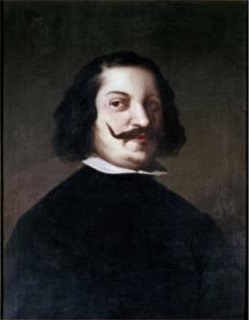
One of the most valuable collections of paintings in Seville is in the church at the Hospital of Mercy. The main works on the decoration of the temple were performed by the leading artists of the Seville school – Bartolomeo Murillo and Valdes Lehal. In the history of Spanish painting, memories of the mutual dislike of two great masters of the Baroque era were preserved. This dislike is often associated with the manifestation of the envy of Leal to his more famous colleague. However, the real reason for their conflict is a huge difference in their characters. This is primarily their paintings say. Nerve lines, a dramatic play of chiaroscuro, pessimistic stories and the bright, open colors of Valdes Leal are opposed to the elegant, soft painting of Murillo.
Juan de Valdez Leal was born on May 4, 1622 in Seville in the family of a jeweler. About the early years of the artist little is known, but there is evidence that he began to receive education in Cordoba from the master Antonio del Castillo. In 1647, Valdez Leal married a girl of noble birth named Elizabeth, and in 1649 the young family had to leave Cordoba because of the plague epidemic. The artist returned to his native city, where he lived until the end of his days.
The most significant work of the early period of the artist’s work is a large cycle “The Story of St. Clara”, performed in 1653-1654. for the monastery in Carmona. In 1657, Valdes Leal receives an order for the Hieronymus monastery for a series of paintings from the life of St. Jerome and the large portrait work of the monks themselves. Despite the seeming carelessness of the figure, the figures of the monks impress with their individuality. In 1658, the artist begins a large order – for the monastery of the Carmelites, he painted the altar with scenes from the life of St. Elijah.
Juan Valdez Leal worked a lot and fruitfully throughout his life, but the main work of the artist is still the church at the Mercy Hospital, for which he created piercing, original and passionate pictures, similar to which there is no in Spanish painting.
The artist died in Seville on October 15, 1690 at the age of 68 years.
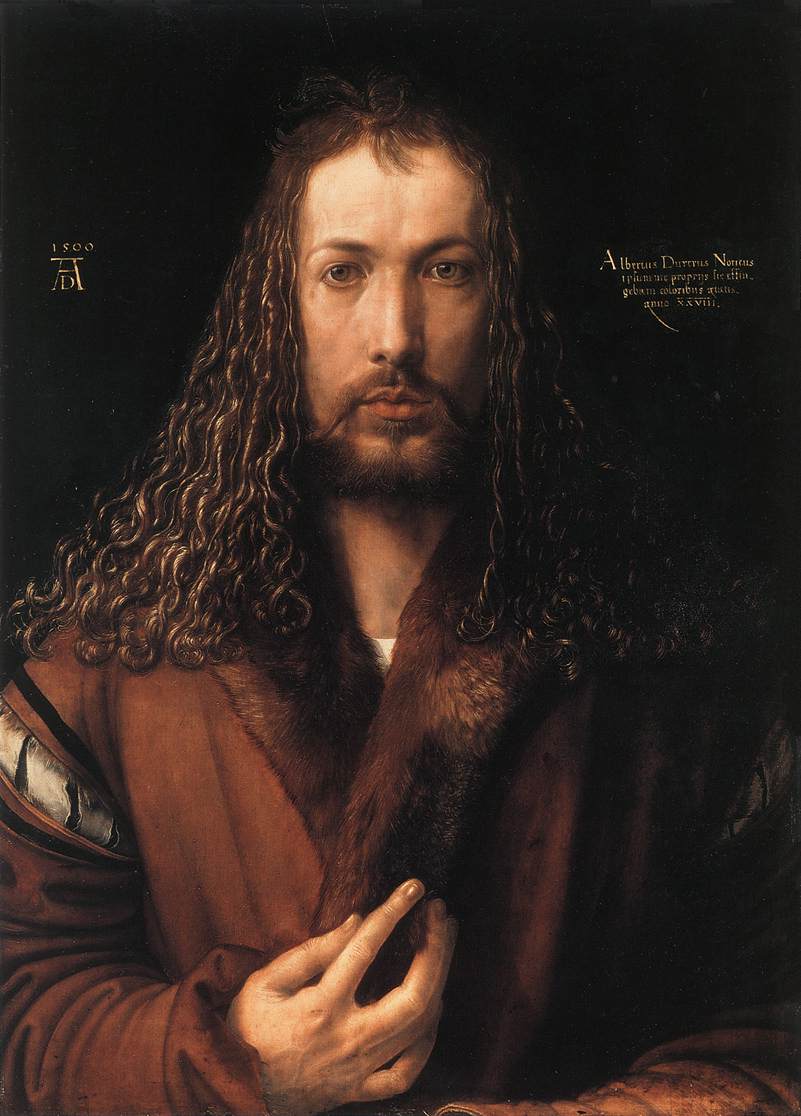
At the end of the 15th century, when the Renaissance in Italy was already approaching its extinction, the Northern Renaissance reached its climax, and in the sky of the northern sky its star lit up, in versatility and depth of talent, comparable to the famous Florentine Leonardo da Vinci, and the name of this greatest German artist – Albrecht Durer. He is recognized as the largest European master of woodcuts, raising it to the level of real art. The first art theorist among northern European artists, the author of a practical guide for artists in German. The founder of comparative anthropometry. The first of European artists who wrote an autobiography.
Albrecht Durer was born May 21, 1471 in the family of goldsmiths in Nuremberg. Durer had eighteen children, of whom eight survived. The future artist was the third child and the second son. His first teacher was his father, but, not wishing to associate himself with the craftsmanship of the jeweler, at the age of 15, Albrecht was sent to the workshop of the leading Nuremberg artist of the time, Michael Wolgemut.
In 1495, Dürer in Nuremberg opened his own workshop and over the next ten years created a significant part of his engravings. In 1498, Anton Koberger, publisher and godfather artist, released the “Apocalypse”, woodcut for which was performed by Albrecht Durer. This work brought him European fame.
Duerer’s engravings on copper, just like woodblock prints, are distinguished by the variety and depth of thought, the light, clear mood, the reflection of all-round talent and the inexhaustibility of fantasy. Combining in his works engraving techniques grabstihelem and needle, he brought their technique to a high degree of perfection, and the small silvery tone of his engravings and the subtlety of the work eclipsed everything created in this way before his appearance.
Albrecht Durer carried out many engravings to order, and from 1512 the main patron and customer of the artist becomes Emperor Maximilian I, who granted the artist an annual pension.
At the end of his life Durer worked a lot as a painter, during this period he created the most profound works. One of the most important paintings of recent years is the diptych “Four Apostles”, which the artist presented to the City Council in 1526. Albrecht Durer died on April 6, 1528, at his home in Nuremberg.
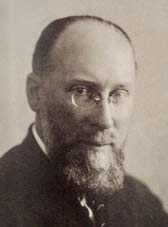
In the 30s of the XX century to convey the simplicity and joy of life, using chamber-intimate subjects, it turned out to be a challenge. The art of that period of propaganda – a man of the young Soviet state resembles an ancient statue: powerful, beautiful and cold. Such heroes look at us from the paintings of Deineka or, for example, Samokhvalov. The works of Nikolai Tyrsa are of a completely different kind, his paintings are inhabited by ordinary people; a certain etude, incompleteness gives his painting a special sensual atmosphere. The artist considered it necessary to preserve the individual handwriting: “The quality of the picture can be in the opposite relation to the time spent”.
Tyrsa Nikolai Andreevich was born May 9, 1887 in the family of a Cossack, an officer of the Kuban Cossack army. In 1905 he began to study architecture in St. Petersburg, but he did not finish it. At the same time, Nikolai attended the Zvantseva Art School, where such famous masters as Dobuzhinsky and Bakst taught. Tyrsa, throughout his life, considered himself the continuer of the traditions of the “World of Art”.
Nikolai Tyrsa went on creative trips and participated in the restoration of old paintings in the Ferapontov Monastery, churches in Novgorod, Yaroslavl and other cities.
In 1916, the artist was drafted to the front, served in the automotive battalion. The revolutionary tendencies did not bypass him, Nikolai Tyrsa joined the “Union of Youth” and actively engaged in political activities. He fervently supported the revolution, seeing in it new opportunities, like many of his contemporaries, the artist became the organizer of the association “Freedom to Art”, was one of the founders of VHUTEMAS. In 1918, Tyrse was commissioned to issue Petrograd for the first anniversary of October. During this period, he did a lot of social activities, participated in many exhibitions, including international ones.
But already in the mid-twenties, Nikolay Tyrsa departs from active social activities, taking up book graphics and teaching. He illustrated the works of Pushkin, Leo Tolstoy, Lermontov, became a member of the Academic Council of the Russian Museum, deepened in scientific work.
June 15, 1941 in St. Petersburg opened a personal exhibition of Nikolai Tyrsa. The artist did not survive the blockade. In early 1942, he was already dying from St. Petersburg, he died in Vologda on February 10.
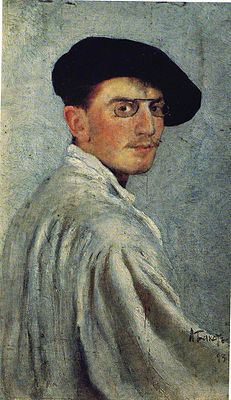
May 9, 1866 was born the famous representative of Russian Art Nouveau, set designer, illustrator, member of the World of Art, Leon Bakst.
Leib-Khaim Izrailevich Rosenberg, namely this name was given to Bakst at birth, was born in Grodno in a wealthy Jewish family. Soon the Rosenbergs moved to St. Petersburg.
The craving for painting was manifested in Bakst since childhood, and in 1883 he entered the Academy of Arts as a volunteer. Bakst studied not very diligently, perhaps because the teaching was of an academic nature, not responding to new trends in the visual arts. In 1887, he failed the competition for a silver medal and retired from the Academy.
The young artist made a living by illustrating children’s books. In 1889 Leib-Chaim Rosenberg became Leon Bakst. His new name, more precisely a pseudonym, the artist borrowed from his grandmother on the mother’s line, somewhat shortening it. The grandmother’s last name was Baxter. The appearance of a catchy pseudonym was associated with the first exhibition, in which the artist decided to present his works.
In 1893 -1897, Leon Bakst lived and worked in Paris, often returning to St. Petersburg, where he met with the “Nevsky Pickwickians.” It was a circle organized by the famous Russian artist, art historian, art critic Alexander Benois. The circle consisted of Konstantin Somov, Dmitry Filosofov, Sergei Diaghilev and some other artists, art critics and writers, who eventually formed the famous art association “The World of Art”. In 1898, the first issue of the magazine Mir Iskusstva was published, the editor of the magazine was Sergei Diaghilev, and the art department of the journal was headed by Leon Bakst.
Bakst entered the ballet group of the organizer of the “Russian Seasons” in Paris, Sergei Diaghilev. These productions, laid in the basis of “Russian Seasons”, shook the satiated French, caused them a storm with nothing incomparable delight. Diaghilev’s “Russian Seasons” triumph was, first of all, due to the exceptionally beautiful performances of Bakst. The artist acquired extreme popularity in Paris. The Russian poet Maximilian Voloshin wrote: “Bakst managed to grasp the elusive nerve of Paris, which rules fashion, and his influence at the present moment affects everywhere in Paris – both in ladies’ dresses and in art exhibitions.” The French government awarded Bakst with the Order of the Legion of Honor.
The artist also wrote a lot and willingly portraits – Levitan, Diaghilev, Rozanov, Zinaida Gippius, Isadora Duncan, Jean Cocteau, Constantine Somov, Andrei Bely.
Leon Bakst died on December 27, 1924 in Paris, at the age of 58, and was buried in the Paris cemetery of Batignolles.